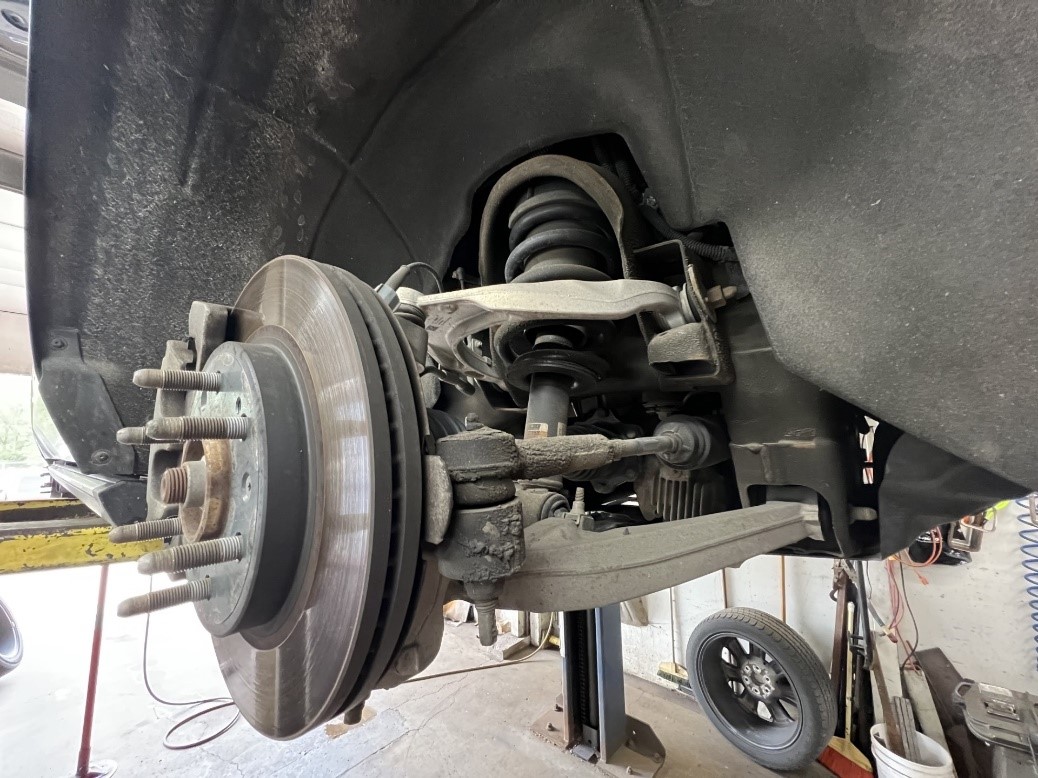
What do I need to know about shocks and struts?
Most modern vehicles provide the operator with a smooth and comfortable ride, thanks in part to your vehicle’s suspension system. A critical component of the vehicles suspension system are the shocks and struts. Often overlooked, these parts play a vital role in ensuring not only your comfort but also your safety on the road. Let’s explore what you need to know about shocks and struts.
The Basics: Shocks vs. Struts
Before getting into why you would need to replace either, it is important to understand the difference between shocks and struts. While they provide the same function in a vehicle, to dampen suspension oscillations, how they are incorporated into the vehicle suspension system is very different.
- Shocks (Shock Absorbers) These are usually hydraulic, and gas filled cylinders that control the bouncing motion of the vehicle tires and suspension. Their primary job is to keep the tire in contact with the road, ensuring stability and ride comfort. The hydraulic shock absorber was originally patented by C.L. Horock in 1913. Although they are based on an early design, they have been improved and further developed over time. Now shocks come with multiple valving options, electronic dampening control (a.k.a. active suspension), adjustable dampening, remote reservoirs, and bypass shocks. All are designed and tuned to the specific vehicle and its intended use. Usually found on the rear of the vehicle or on all four corners of a straight axle vehicles.
- Struts (Strut Assemblies) Struts are very similar to shock in the fact that they dampen suspension oscillations. The key difference is how they are incorporated with the vehicle suspension. A strut is an integral part of the vehicle steering and suspension. Usually containing the coil spring. Meaning, if the strut is removed, the vehicle suspension will collapse, and the vehicle will not be drivable. Primarily found on the front of modern vehicles, they are also common on all four corners of sedans and crossovers.
When is it time to replace shocks and struts?
Shocks and struts are worn slowly over time. Meaning they lose their ability to do their job a little more each day. Each vehicle manufacturer has a specific mileage range for recommending shock and strut replacement. Generally, the industry standard is between 50,000 and 75,000 miles. This can vary depending on how the vehicle is used, weight, environmental exposure, and terrain. If you are experiencing any of the following, it is an indication that you are overdue for shocks and strut replacement.
- Rough Ride: If you notice that your vehicle’s ride is rougher than before, or you feel more vibrations in the cab it is a sure sign that your shocks and struts are worn out.
- Uneven Tire Wear: Worn shocks and struts can cause uneven tire wear, leading to premature tire wear and increased maintenance costs.
- Poor Handling: The purpose of shocks and struts is to slow down and control tire movement. When the tires are left uncontrolled, you will experience poor handling characteristics, such as excessive body roll during turns, longer braking distances, or the front of the vehicle will dive forward when braking.
- Fluid Leaks: If fluid leaks are detected around the shock/strut rod or anywhere on the body of the shock or strut it is a clear sign that they have exceeded their useful life.
- Bouncing or Noise: If you hear a banging sound or if your vehicle bounces excessively, it’s time for a thorough steering and suspension inspection.
The Importance of Replacement
- Safety: The number one and most important reason to stay on top of your shock and strut replacement is safety. Tire contact is what provides vehicle control, traction, and stability. The job of your shocks and struts is to always keep your tire in contact with the ground while controlling the bouncing motion of your vehicle. Replacing your shocks and struts at the appropriate time ensures your safety and that of your passengers.
- Tire Life: Properly functioning shocks and struts help maintain even tire contact with the road, extending the life of your tires and improving fuel economy.
- Handling and Performance: Replacing worn shocks and struts can restore your vehicles’ handling and performance to its optimum state, enhancing your driving experience.
- Ride Comfort: A smooth comfortable ride is not just a matter of luxury; it contributes to reduced driver fatigue and a more enjoyable driving experience.
In conclusion, shock and strut replacement is not just about ride comfort; It’s about safety and the overall health of your vehicle. Regular inspection and timely replacement of these components can ensure a smoother, safer, and more enjoyable driving experience. While also helping you save on maintenance costs in the long run. Don’t wait until your ride is bouncing down the road on the way to failure. Get your shocks and struts inspected today and keep your ride rolling down the road smoothly and safely.
Aaron B.